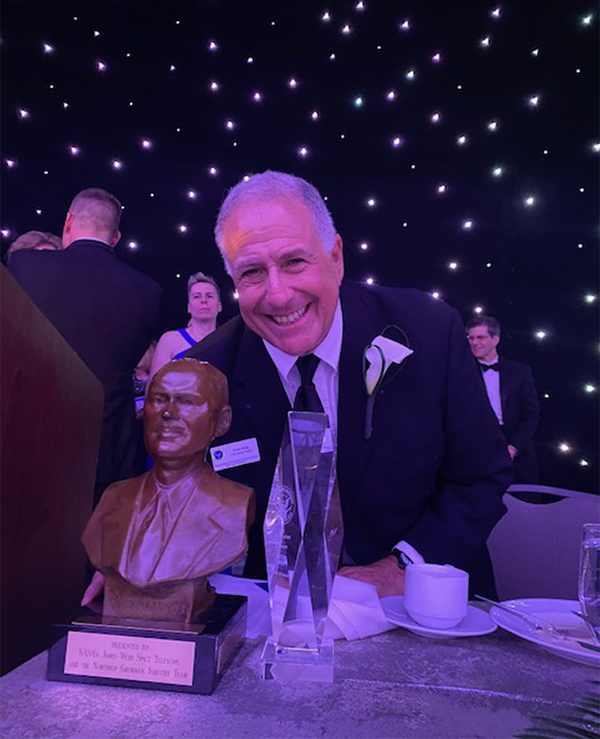CBS News Radio’s Peter King Honored with Press Award

Pictured here is CBS News Radio correspondent Peter King posing with the National Space Club and Foundation’s Press Award (right) he accepted earlier this month at the organization’s 66th annual Dr. Robert H Goddard Memorial Dinner in Washington DC for “his outstanding coverage of the space program while working at CBS News radio. Mr. King has been a voice of the American space program for more than 25 years covering the space shuttle program from 1995 to its conclusion in 2011, multiple robotic in science, missions, the beginning of commercial space flight, and the return of America’s human spaceflight program.” King is the fourth CBS journalist to receive the award, following Edward R Murrow, Walter Cronkite, and Bill Harwood. King is also posing with the prestigious Robert H Goddard Memorial trophy, which was awarded to NASA’s James Webb Space Telescope and the Northrop Grumman industry team.



